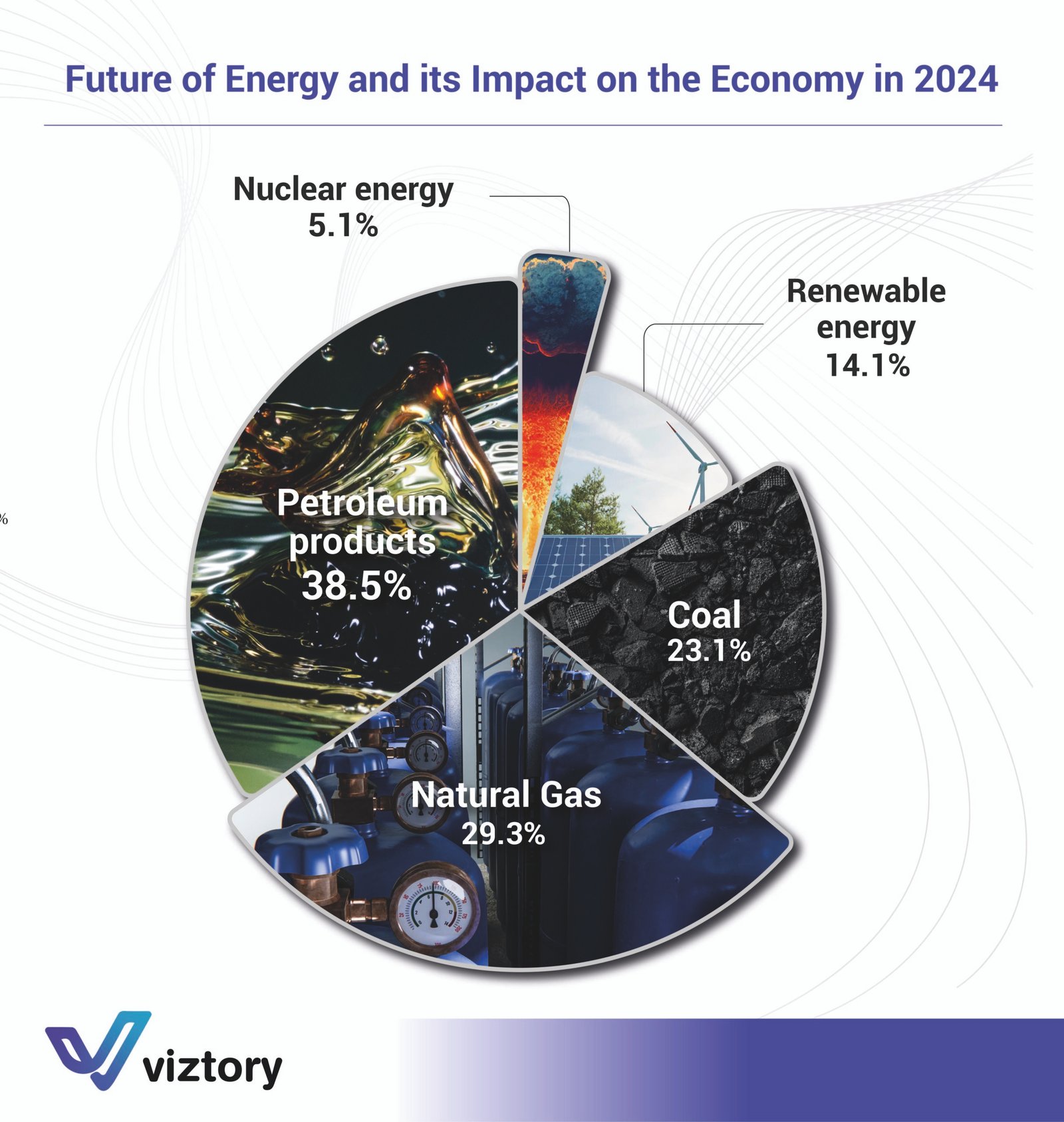The Future of Energy and Its Impact on the Economy in 2024
-
Jul, Sun, 2024
The Future of Energy and Its Impact on the Economy in 2024
Introduction
With ongoing technological advancements and global climate changes, it becomes imperative to evaluate the distribution of energy consumption and its impact on the global economy. The indicator before us illustrates the distribution of energy consumption in 2024, where fossil fuels continue to dominate the scene, while renewable and nuclear energy see limited growth.
Energy Consumption Distribution
According to the indicator:
- Petroleum products account for the largest share at 38.5%.
- Natural gas represents 29.3%.
- Coal accounts for 23.1%.
- Renewable energy represents 14.1%.
- Nuclear energy represents 5.1%.
Impact of Energy Consumption Distribution on the Economy
Cost and Pricing:
- Fossil Fuels: The fossil fuel market is affected by fluctuations in the prices of oil, natural gas, and coal, leading to volatility in production and transportation costs. Rising oil prices can increase industrial production and transportation costs, adversely impacting the economy.
- Renewable Energy: While the initial investment costs for renewable energy may be high, operating and maintenance costs are usually lower than those for fossil fuels. This can lead to price stability in the long term.
Environmental Sustainability:
- Fossil Fuels: The excessive use of fossil fuels is a major factor in air pollution and climate change, increasing the economic burdens resulting from climate changes and natural disasters.
- Renewable Energy: Renewable energy contributes to reducing carbon emissions and preserving the environment, thereby reducing environmental and health costs associated with pollution.
Energy Security:
- Fossil Fuels: Many countries rely on fossil fuel imports to meet their energy needs, making them vulnerable to political and geopolitical fluctuations.
- Renewable Energy: Renewable energy can enhance energy security for countries by reducing dependence on imports and providing local, sustainable energy sources.
Innovation and Technology:
- Investing in renewable technology can create new job opportunities and enhance industrial innovation. Additionally, advancements in storage technologies, solar energy, and wind energy can improve energy use efficiency and reduce costs.
Conclusion
The energy consumption distribution in 2024 reflects the ongoing dominance of fossil fuels but also indicates steady growth in the use of renewable energy. The impact of this distribution on the economy is multifaceted, playing a significant role in production costs, environmental sustainability, energy security, and technological innovation. Therefore, governments and companies should adopt balanced strategies that combine the benefits of traditional resources with investments in renewable sources to ensure a sustainable and stable economic future.

